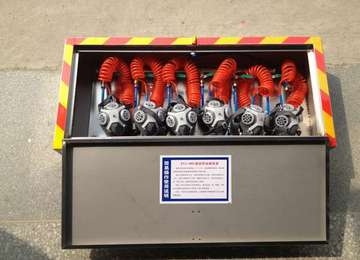Oxygen Self-Rescuers: A Comprehensive Guide to Emergency Breathing Devices
Date:2025-04-26 Label:
Rescue Equipment
Fire Fighting Motorcycle
Rescue Tripod
Chemical Oxygen Self Rescuer
Overview
An oxygen self-rescuer (also known as a self-contained self-rescue device, SCSR) is a portable breathing apparatus designed to provide emergency oxygen in hazardous environments, such as mines, chemical plants, or confined spaces with toxic gases. It allows users to escape from oxygen-deficient or smoke-filled areas by supplying breathable air for a limited time.

Key Features
Compact & Lightweight – Easy to carry and wear during emergencies.
Immediate Oxygen Supply – Provides breathable air within seconds of activation.
Chemical or Compressed Oxygen Source – Uses either chemical oxygen generators or compressed oxygen tanks.
Duration – Typically lasts 10 to 60 minutes, depending on model.
One-Time Use or Reusable – Some are disposable, while others can be recharged.
Types of Oxygen Self-Rescuers
Chemical Oxygen Self-Rescuers
Uses a chemical reaction (e.g., potassium superoxide) to generate oxygen.
Common in mining applications (e.g., Draeger Oxy-SR, MSA W65).
Compressed Oxygen Self-Rescuers
Stores oxygen in a high-pressure cylinder.
Often used in firefighting and industrial escape scenarios.
Filter-Based Escape Hoods (Not pure oxygen, but related)
Filters toxic gases but does not supply oxygen in oxygen-deficient environments.
Working Principle
Activation – User pulls a trigger or removes a seal to start oxygen flow.
Oxygen Generation/Release –
Chemical type: Reacts with exhaled CO₂ and moisture to produce O₂.
Compressed type: Releases stored oxygen via a regulator.
Breathing Cycle – Delivers oxygen through a mouthpiece or mask.
Applications
Mining Industry – Emergency escape from methane or CO₂ exposure.
Industrial Work – Chemical leaks, confined space accidents.
Firefighting & Emergency Response – Smoke-filled environments.
Military & Submarines – Emergency breathing in toxic conditions.
Advantages
Life-Saving in Toxic Atmospheres – Provides critical oxygen supply.
No External Power Needed – Fully mechanical operation.
Regulated Flow – Prevents oxygen toxicity risks.
Limitations
Limited Duration – Must reach safety before oxygen runs out.
Single-Use (Most Models) – Cannot be reused after activation.
Training Required – Proper usage is essential for effectiveness.
Safety & Maintenance
Regular Inspections – Check for damage or expired canisters.
Proper Storage – Keep in a dry, accessible location.
Training Drills – Ensure workers know how to activate and use the device.
Conclusion
Oxygen self-rescuers are vital safety devices in high-risk industries, offering a lifeline during emergencies. Proper selection, maintenance, and training are crucial for ensuring their effectiveness in life-threatening situations.



